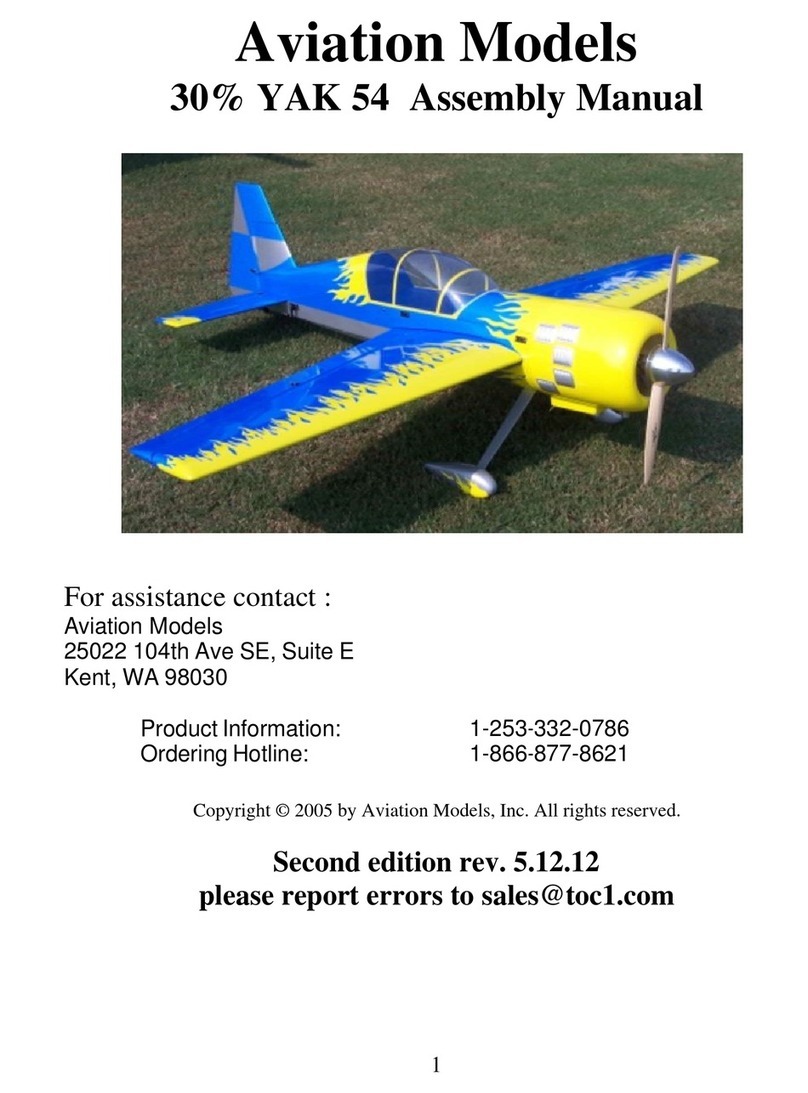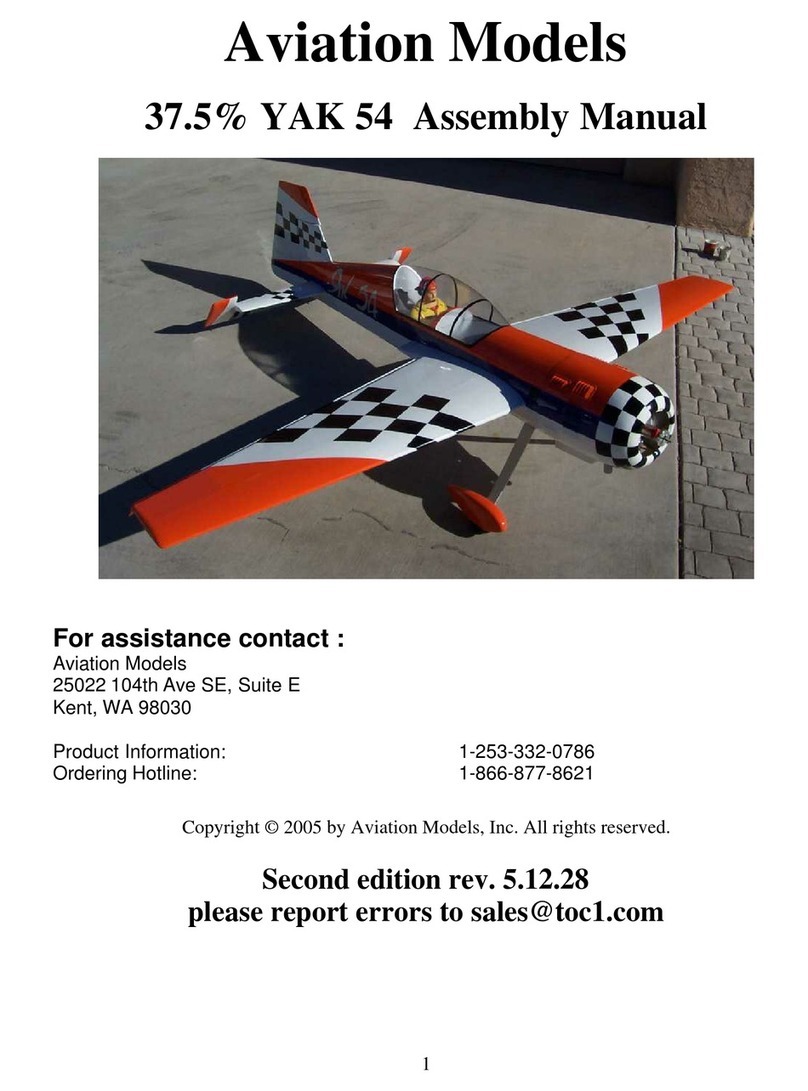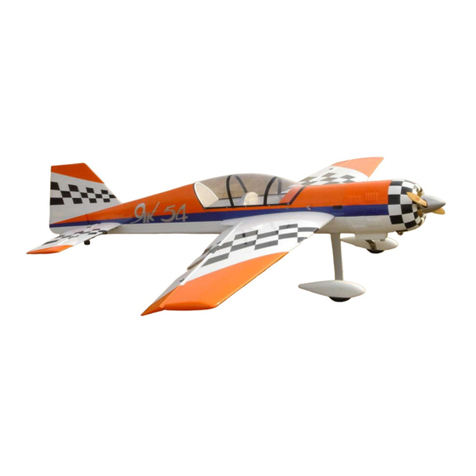
Knownissuesandimprovements
There are a few areas where, at this unassembled stage, you can improve the final
results of your assembly pr
o
ject. There are many items that cannot be addressed on
the a
s
sembly line due to cost and possibly because not every improvement would
be welcomed by every builder. Here are a few items that h
ave come up over time.
Go over the covering with a heat gun or iron
. The covering tends to get loose
over time and with changes in temperature and humidity. It may have come out of
the box with wri
n
kles, I can assure you it did not go into the box that way
.
Clean out the hinge holes. Without removing any wood, use a very sharp X
-
acto
knife and remove any covering that may have been pushed into the hinge holes. It
is very important that the glue sticks to the wood and not to the covering.
Lightweightlanding gear and wing tube. In the 30% EXTRA 260 we have tried
to provide as much flexibility as possible with regard to engine choice. It is som
e-
times difficult to be all things to all people. In any case, we have provided very
strong landing gear and wing tubes, which are suitable for any type of engine and
flying but add some weight to the finished plane. Some pilots chose to order ca
r-
bon f
i
ber landing gear and/or wing tubes. This can save several ounces of weight.
Hardening holes. The fuselage sides on this plane are made of balsa which in ce
r-
tain areas is doubled by lite
-
ply. Using wood screws in balsa is diff
i
cult because
balsa is very soft. It’s a good idea whenever you drill a hole that must accept a
wood screw to put a drop of thin CA into the hole and then if necessary re
-
drill the
hole. The CA will wick into the wood and harden it, adding strength in that area.
Engine mounting
PLEASE READ THE INSTRU
C
TIONS FOR STEP 2 COMPLETELY BEFORE
CUTTINGANYTHING!
The first thing to do, before anything else goes in the fuselage, is to get the engine
mounted and aligned with the cowl. This can be a little tricky, so take your time.
This is perhaps the most difficult part of building this kit, so once you get this
right, you’re on your way to having a great plane
. Do this first before you hinge
the ru
d
der.
Note that the firewall already has a proper amount of right thrust built in, do not
use any other offsets. When you shim the engine out from the firewall use shims of
equal thickness on all 4 corners so that yo
u do not introduce any other thrust a
n-
gles.
This plane is designed around an e
n
gine of 3 to 4 1/2 pounds. If you plan to use a
heavier engine (some people plan to use 70
-
75cc, even though that is way ove
r-
powered and overweight) it’s a good idea to double the firewall. I have flown this






























